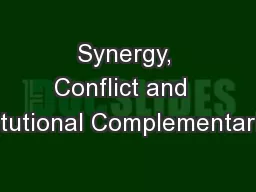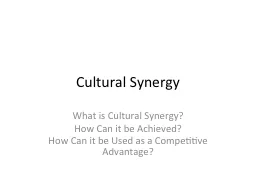PPT-Synergy, Conflict and Institutional Complementarities
Author : karlyn-bohler | Published Date : 2018-03-08
Fabio Landini Università Bocconi Ugo Pagano Università di Siena and Central European University Second International GROE Workshop Institutions and Economic
Presentation Embed Code
Download Presentation
Download Presentation The PPT/PDF document "Synergy, Conflict and Institutional Com..." is the property of its rightful owner. Permission is granted to download and print the materials on this website for personal, non-commercial use only, and to display it on your personal computer provided you do not modify the materials and that you retain all copyright notices contained in the materials. By downloading content from our website, you accept the terms of this agreement.
Synergy, Conflict and Institutional Complementarities: Transcript
Download Rules Of Document
"Synergy, Conflict and Institutional Complementarities"The content belongs to its owner. You may download and print it for personal use, without modification, and keep all copyright notices. By downloading, you agree to these terms.
Related Documents














